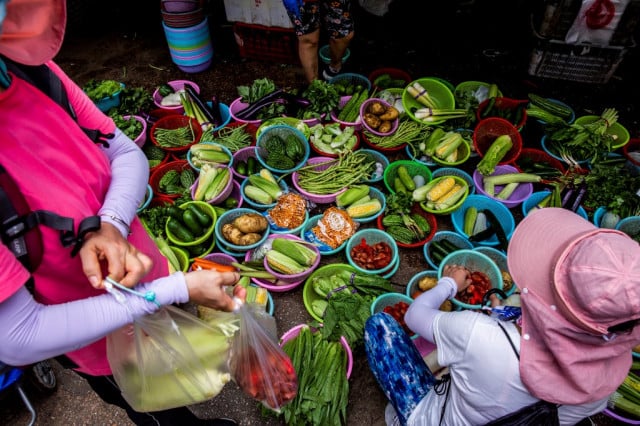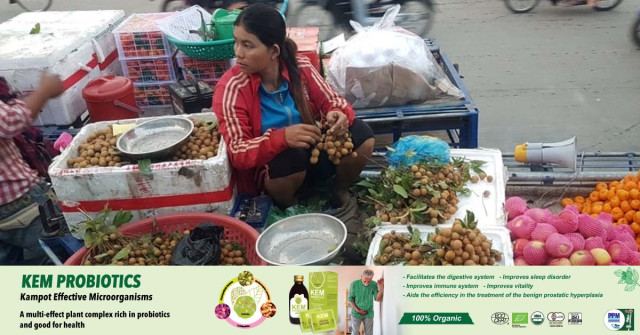Rising food prices deepen the woes of world's poorest

- By Agence France-Presse (AFP)
- July 2, 2021 3:01 PM
Paris, France | Global food prices are rising at their fastest rate in a decade, exacerbating the troubles of the world's most vulnerable nations as they struggle with the fallout from the coronavirus pandemic.
The United Nations' Food and Agriculture Organization (FAO) is worried that soaring prices could foment further social unrest in countries already mired in political turmoil.
Here is a look at the situation worldwide:
- Where are food prices headed? -
According to the FAO, food prices were nearly 40 percent higher in May than a year ago, the sharpest increase since September 2011.
On a 12-month basis, the price of corn has skyrocketed by 88 percent, soybean by 73 percent, grain and dairy products by 38 percent, sugar by 34 percent and meat by 10 percent.
"Obviously, it's very concerning," said Arif Husain, chief economist of the World Food Programme.
In 2007-2008, brutal increases in the price of basic foodstuffs sparked riots in a number of cities around the world. Peaking in 2010-2011, the price rises acted as a harbinger for the Arab Spring uprisings.
- What is driving the phenomenon? -
The global economy is rebounding but inflation is also rising as governments have spent huge sums on stimulus programmes after the pandemic brought economic activity to a standstill last year.
China, which the World Bank projects will notch up growth of 8.5 percent in 2021, is gobbling up basic foodstuffs such as oilseed, cereals and meat.
"It really is China which is currently fuelling the surge in food prices," said economist Philippe Chalmin.
The US economy is also expected to bounce back strongly, with the World Bank projecting growth there of 6.8 percent this year.
But the economic recovery is "very uneven" across the world, with developing nations facing higher import bills while their income is not growing, said Josef Schmidhuber, deputy director of the FAO's trade and markets division.
Other factors behind the surge in prices include a drought in Brazil, which is driving up corn prices, rebounding oil prices and an explosion in sea freight costs.
- How long will it last? -
That is difficult to say.
For the moment, harvests are projected to be very good.
The US Department of Agriculture is forecasting record crop production for 2021-2022 and also record harvests of Brazilian soybean and American corn. If these materialise, that will help ease the price situation.
But climate conditions could be a wild card in such projections.
The FAO's Schmidhuber believes that prices will remain relatively high this year, notably if oil prices go up as the agriculture sector consumes a lot of energy.
"If they rise, food prices will remain high for a long period of time".
For FAO economist Abdolreza Abbassian, "the only thing we know is that the food market is going to be even more volatile in the future than it was in the past".
- What is the impact for poor countries? -
In a range of countries currently facing other "shocks", such as Covid-19, food price inflation currently stands at more than 20 percent, said WFP's Arif Husain.
Lebanon is facing a grave financial and economic crisis that has sent its currency into tailspin and brought the country close to default. There, the rate of food price inflation stood at 226 percent on a 12-month basis in May, according to the website Trading Economics.
In Argentina, the government suspended beef imports for a month in mid-May as food price inflation skyrocketed.
According to the World Bank, high inflation in Nigeria, fuelled by sharp increases in foodstuff prices, has plunged another seven million people into poverty.
"Prices are going up, but at the same time people's incomes are decimated because of Covid," said WFP's Husain.
"A poor person gets squeezed because prices go up and at the same time they have no money," he said, pointing out that conflicts were the main cause of food insecurity.
- Will it trigger social unrest? -
FAO economist Abbassian said there was "no evidence that countries are any better prepared than they were 10 years ago" for such price volatility.
"More or less the same countries which were in the forefront of the riots and political instability 10 years ago, today can easily find themselves in exactly the same situation: waking up in the morning and find prices have gone up very rapidly," the economist said.
However, unlike a decade ago, when rocketing food prices were clearly the main cause of social discontent, now they were "one along many other issues".
Rich countries, Abbassian said, have to be "prepared for upheavals" in Africa, Latin America and Asia.
"Discontent is so widely spread now".
For social unrest to erupt, "all you need is a little spark. It can be food prices, or energy prices, or simply bad rain."
© Agence France-Presse















